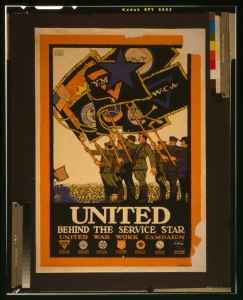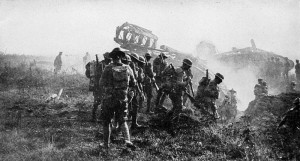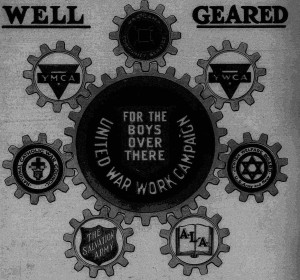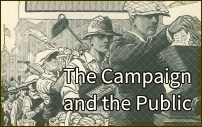
This site is dedicated to examining the United War Work Campaign of November 11-18, 1918, an effort to raise $170,000,000 to provide entertainment for American troops abroad in World War I. Seven non-governmental organizations participated in this campaign: The American Library Association, Jewish Welfare Board, Knights of Columbus, the Salvation Army, War Camp Community Service, Young Men’s Christian Association and Young Women’s Christian Association. The campaign began November 11, 1918, on the day the war ended. However, fundraising continued, as troops would remain in France until well into 1919.
The “Seven Sisters” did not always get along well behind the scenes of the United War Work Campaign, but each had a personal stake in its success. Because of this, they were able to present a strong appeal to the people of the United States to donate to a cooperative coalition that wanted the best for all American servicemen.
U.S. Entry into World War I
On June 28, 1914, Archduke Franz Ferdinand of Austria was assassinated in Sarajevo by a member of a Serbian nationalist group known as the Black Hand.[1] This event ignited a series of military maneuvers throughout Europe that brought almost every nation on the continent into a state of war. On May 7, 1915, the British passenger vessel Lusitania was torpedoed and sunk by a German U-boat, dealing a final blow to American neutrality when 128 Americans died as a result of the attack.[2]

As American casualties continued to grow, Wilson became convinced that “failure to act… would forfeit American influence” as the possibility of a negotiated peace settlement faded.[3] The continuation of unrestricted submarine warfare led President Wilson to ask for, and receive, a declaration of war by the Congress of the United States in April of that year.[4]
Americans Social Groups in Support of the War

Once the United States entered the First World War, many social and ethnic groups endorsed the involvement of their country. One group not so willing to do so was the millions of African Americans living in the United States. Usually not possessing the right to vote, many in this demographic did not see the merit in defending a country that did not value them. Others, such as W. E. B. Du Bois, argued that the black community should support the war effort, “shoulder to shoulder with our white fellow citizens,” without demanding compensation.[5] In addition to African Americans, religious groups found themselves pressured into declaring support for the war. Those participating in the United War Work Campaign, however, seized the opportunity to find a greater audience with the American public. As each of these groups pushed to prove that it was 100 percent American, the federal government viewed the campaign as an example of a united America in support of the war.
The United War Work Campaign
In the weeks and months before the United War Work Campaign took place in November of 1918, the seven sister groups came into conflict on a variety of issues. Ranging from the division of funds to the decision to have a single united funding drive, there was little common ground for the participants to stand on. By the conclusion of the campaign, however, these varied groups were able to raise more than enough money, despite their differences, to support American soldiers. No matter their creed, all of these American groups rallied to support “the boys over there.”
Use the following buttons or the tabs at the top of the page to explore this site on the United War Work Campaign.
[1]Robert H. Zieger, America’s Great War: World War I and the American Experience (Lanham, MD: Rowman & Littlefield, 2001), 7.
[2]Zieger, America’s Great War, 22.
[3]Zieger, America’s Great War, 51.
[4]Zieger, America’s Great War, 52.
[5]Zieger, America’s Great War, 130-31.


